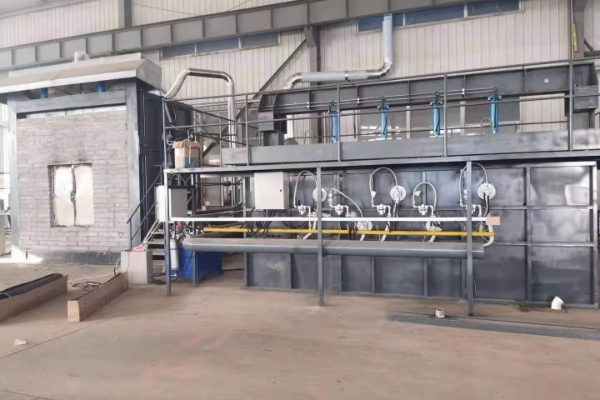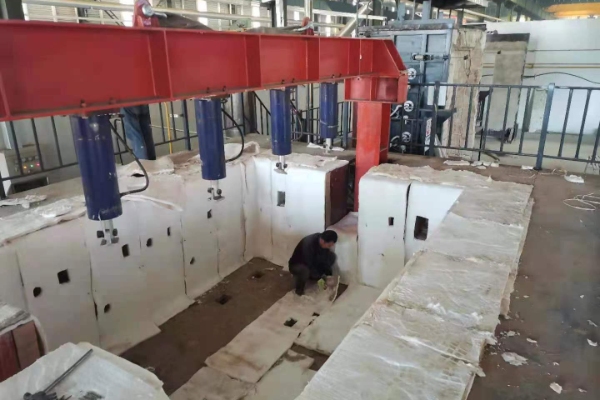In recent years, with the continuous development of urban construction and the increase of high-rise buildings and large-scale industrial facilities, the demand for building fire safety has become more urgent. Steel structure is a common structural form in modern buildings, with the advantages of strong load-bearing capacity and high construction efficiency. However, steel is prone to softening and deformation at high temperatures, which affects the integrity and stability of the structure and leads to the occurrence of fire accidents. In order to solve this problem, steel structure fireproof coating has emerged.

Steel structure fireproof coating forms a layer of high-temperature resistant protective layer on the surface of steel, which can effectively isolate the contact between steel and flame, slow down the heat rate of the steel structure, and delay the softening and deformation time of steel, thus increasing the fire resistance performance of steel structure. In order to verify the fire resistance performance of steel structure fireproof coating, a series of fire resistance test must be carried out.
The fire resistance test of steel structure fireproof coating usually includes standard flame test, impact resistance test and high temperature resistance test. The standard flame test is to assess the ability of the fireproof coating to resist flame attack, in which a standardized flame burner is used to continuously irradiate the coating and observe its fire resistance. The impact resistance test simulates the impact of objects that may occur in a building fire, and observes whether the coating is ruptured or peeled off by impacting the surface of the coating with a heavy hammer. High temperature resistance test is to place the steel protected by the coating in a high temperature environment and observe the performance changes of the steel and the coating.
The fire resistance test of steel structure fireproof coating needs to follow strict norms and standards to ensure the accuracy and reliability of the test results. The test results will directly affect the application range and effect assessment of the fireproof coating. Therefore, the test process must monitor the temperature, time and other parameters, and record and analyze them in order to draw scientific and objective conclusions.
The fire resistance test items of steel structure fireproof coating usually include the following aspects:
1. Standard flame test: A standardized flame burner is used to continuously irradiate the steel structure fireproof coating to observe its fire resistance performance within a certain period of time. This test evaluates the ability of the coating to resist flame attack.
2. Impact resistance test: Simulates the impact of objects that may occur in a building fire. The impact resistance of the coating is assessed by hammering the surface of the coating and observing whether the coating ruptures, falls off, etc. The impact resistance of the coating is evaluated.
3. High temperature resistance test: Place the steel protected by the coating in a high temperature environment and observe the changes in the performance of the steel and the coating. This test can evaluate the softening and deformation resistance of steel structure fireproof coating under high temperature conditions.
4. Weathering resistance test: Expose the specimen protected by the coating to the natural environment, constantly subject to the influence of the sun, wind and rain and other natural factors, and observe the coating's resistance to aging and ultraviolet degradation and other properties. This test evaluates the durability and long-term performance of the coating.
5. Chemical substance erosion test: Common chemical substances (such as acid, alkali, etc.) are exposed to the coating to observe the coating's resistance to chemical erosion. The test simulates the chemical leakage that may occur in a building fire.

In addition to the above basic test items, according to the specific application scenarios and needs, other related tests can also be carried out. For example, if the steel structure fireproof coating is used in marine environment, salt spray corrosion test can also be carried out; if the coating needs to have waterproof function, water tightness test can also be carried out. The test results will provide a basis for the selection and application of steel structure fireproofing coatings, and ensure its fireproofing effect and reliability in the actual project.
The fire resistance test of steel structure fireproof coating is an important link to ensure its performance and quality. Through scientific and reasonable testing methods and the application of innovative technologies, we can better evaluate the fire resistance performance of fireproof coatings and provide reliable guarantee for building fire safety. In the future, with the continuous progress of science and technology, the research and development of steel structure fireproof coating will usher in a broader development space and make greater contribution to the sustainable development of construction engineering.